Do you love the freedom of the open road? Are you constantly looking for new adventures? If so, you’ll want to consider investing in an off-grid energy source for your RV or adventure van. This will allow you to road trip wherever you want, without worrying about finding an outlet to plug into or shore power, a marine term for docking your vehicle to a permanent power source. In this blog post, we’ll discuss ways to generate your own power for your RV while on the go!
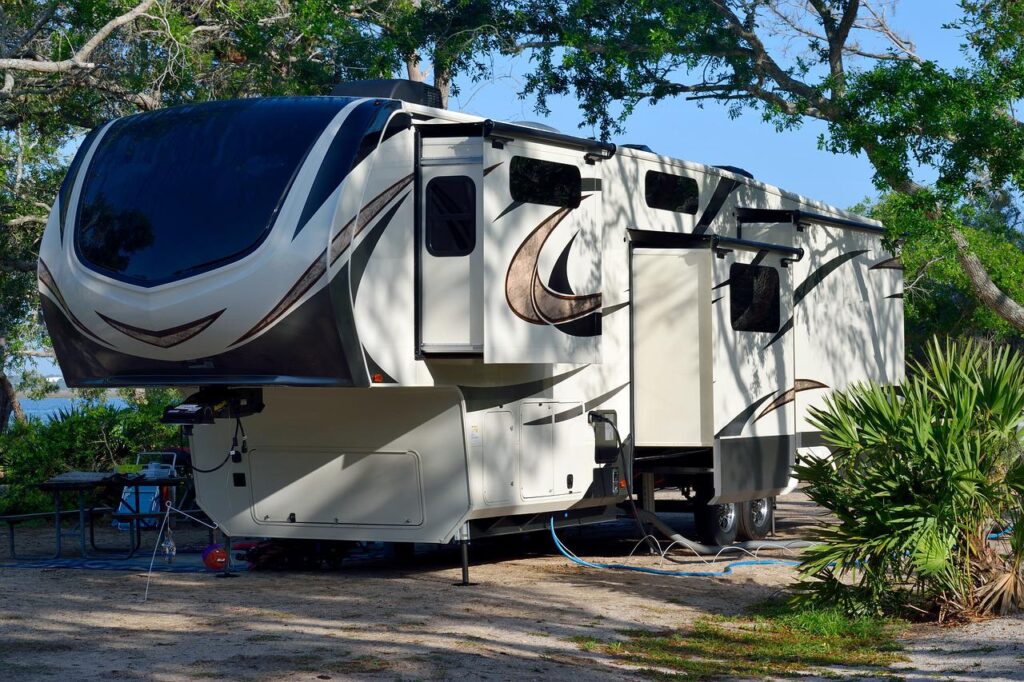
Power Management in your Camper Van
There are many ways to keep things running on the road, but they depend on the environment (light and temperature), capacity, fuel sources, and how to recharge batteries if you have them.
DC Current (D/C)
Most batteries in RVs, like your car, truck, and boat, provide direct current or DC. This is a type of power that is easy to store and manage. Many of the devices in your RV will use DC power, including the lights, water pump, USB outlets, and refrigerator. However, it’s important to note that not all devices can run on DC power. Some appliances, like the TV and microwave, require AC power if you want to use all of the devices in your RV while on the go, you’ll need to have a way to convert AC to DC power.
Most AC appliances, like those in your home, will not work when powered by DC. This is because the AC signal is not a pure sine wave, the type of signal that these appliances require if you want to be able to use all of the devices in your RV while on the go, you’ll need to have a way to convert AC to DC power.
One way to do this is by using a pure sine wave converter. These converters will produce a clean, consistent signal allowing your appliances to run correctly. However, there is some overhead in converting DC to AC. If you want to maximize your efficiency, you should try to use DC-powered devices to save on the power conversion tax.
Alternating Current (A/C)
You can supply your A/C current needs in three primary ways:
- You can convert your DC batteries using a pure sine wave converter to generate electricity.
- You can use an onboard or external generator to run microwaves and air conditioning appliances.
- You can connect to shore power, but that comes at the cost of less mobility to go where you may want to visit.
No matter what method you choose, it’s essential to ensure that you have a reliable source of power for your RV. You can travel wherever you want without connecting to shore power with the right equipment.
AGM Batteries
AGM batteries (short for Absorbent Glass Mat) are a type of lead-acid battery designed for deep cycling. These durable batteries can be discharged and recharged multiple times without damage. Due to their resistance to shocks and vibrations, they are ideal for RVs. Solar or an alternator can be used to recharge AGM batteries while driving. They tend to be the least expensive option for batteries. Still, their disadvantage is that they have a lower energy density and require more frequent recharges than other batteries, such as lithium batteries. These batteries use the same technology as your regular battery, which is part of your adventure van chassis.
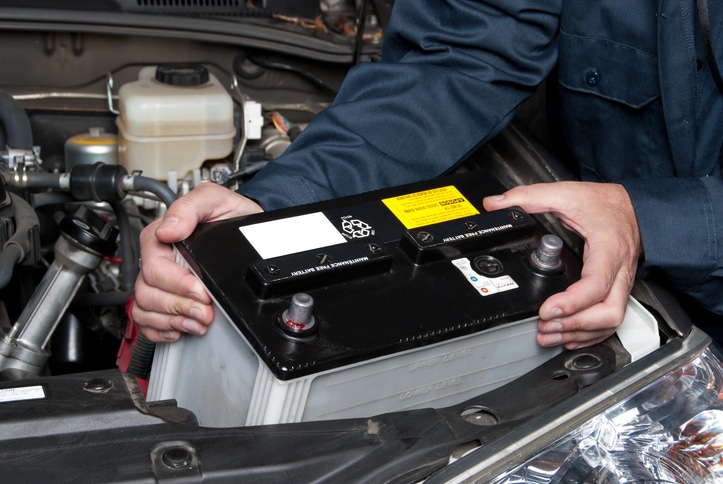
Lithium Batteries
Lithium batteries are excellent for powering your RV because they offer several benefits. For example, lithium batteries have a high energy density, meaning they can store much energy in a small space. They also have a long life span, which is perfect for RV applications.
Lithium batteries are durable and can withstand a great deal of wear and tear. This makes them ideal for use in harsh environments like RVs, even though you will want to understand how to protect your batteries from extreme temperatures via insulation and climate control capabilities.
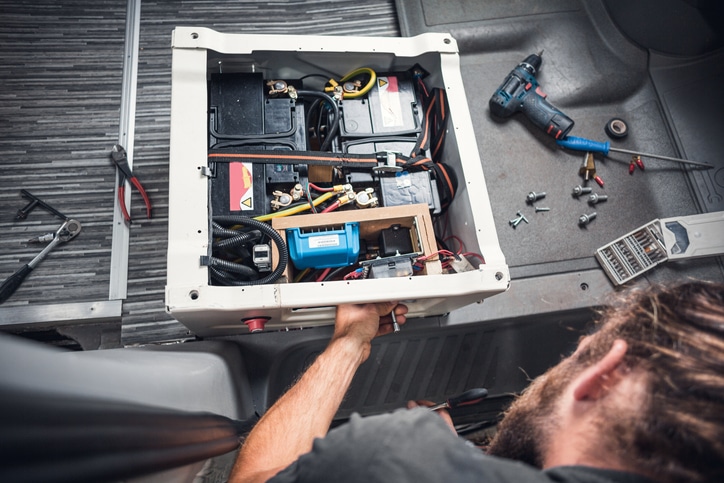
How to Charge Your Batteries
Your RV’s alternator is another excellent way to generate power while on the move. It converts the mechanical energy from your engine into electricity that can be used to recharge your batteries or power your appliances directly.
Second Alternator on your RV
An alternator is a device that converts mechanical energy into electrical energy. It’s typically used in vehicles to charge the battery and power the electrical system when the engine is running.
If you have a dedicated RV power bank in your van, you may want to consider a second high-voltage alternator to charge your batteries while driving. This will likely be the fastest way to charge your batteries. Also, this method is simple using your gas or diesel engine.

Additionally, you can use your solar power to recharge your batteries. It doesn’t require expensive fuel, just regular sunlight. However, remember that this option is typically slower and at the mercy of mother nature.
Solar Panels
Solar or photovoltaic panels are a great way to generate renewable, emissions-free power for your RV. Sunlight is the ultimate off-grid power source. Solar panels harness the sun’s energy; no additional fuel is needed.
They can be used to recharge your battery bank or to directly power appliances and electronics. However, there are some downsides, you probably will have a limited amount of space on your roof for solar panels, and then you are dependent on the sun. Many RVs, like the Airstream Interstate 24x, have ports to add external solar panels to help keep the batteries charged. Still, you will be limited by the availability of sunlight and the panels’ total surface area versus the significant benefit of having free, renewable energy.
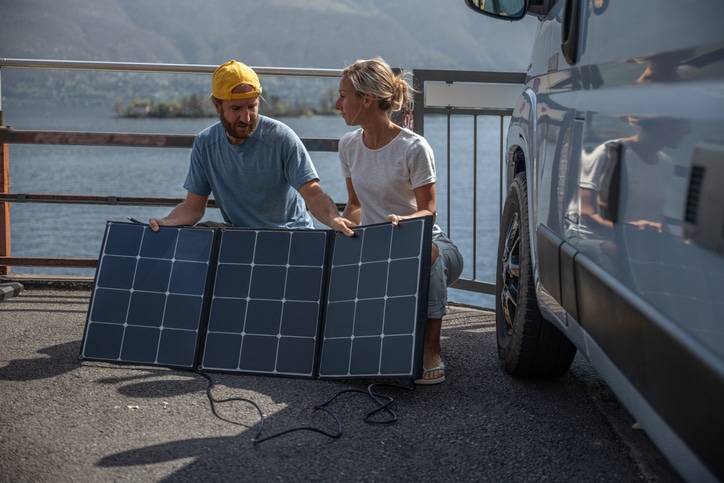
Battery and Power Bank Vendors
The payload of your adventure van has limitations. Energy storage potential, battery duty cycle, and weight are important considerations. Amp-hours (Ah) is a rating used to describe the power of a battery. It is the amount of current a battery can deliver for a specific period. For example, a 100 Ah battery can provide one amp for 100 hours or two amps for 50 hours before recharging. Try calculating your power needs so you aren’t left in the dark (pun intended).
Dedicated Battery Vendors
Dedicated batteries power the various outlets in your RV. They are charged via solar, a generator, shore power, or your van’s alternator. The increases in battery energy density and overall energy efficiency have improved over the last couple of years. And, you may want to consider how fast things change before you over-invest in batteries that will soon become obsolete.
Renogy (affiliate link) is an excellent choice for RV Lithium batteries, because they are some of the most reliable and durable on the market. Their products withstand a lot of wear and tear, making them perfect for harsh environments like RVs. Additionally, their lithium batteries offer a long life span, which is ideal for this application. The Renogy Blog is also a good source of information, and their article on the cost per watt for solar is a good read.
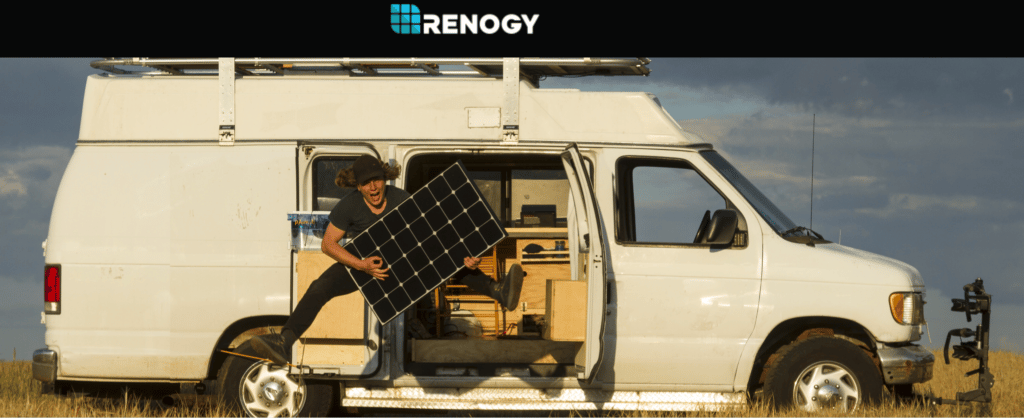
Battle Born is a popular option for RVs and marine vessels alike. They offer a duty cycle of 3000-5000 cycles and a 10-year warranty. As a result, they are frequently used by RV vendors, including those in the 2022 Airstream Interstate 24x.
Tiny Watt Solar is not a battery vendor, but instead, they provide turnkey electrical systems for van builders and do-it-yourselfers who want to build their vehicles. They offer a complete electrical box with breakers, batteries, and an inverter to allow you to install a turnkey electrical system more easily with the guidance of a professional. In addition, they provide some unique rooftop fixtures, including a storage box covered in photovoltaic cells and walkable panels.
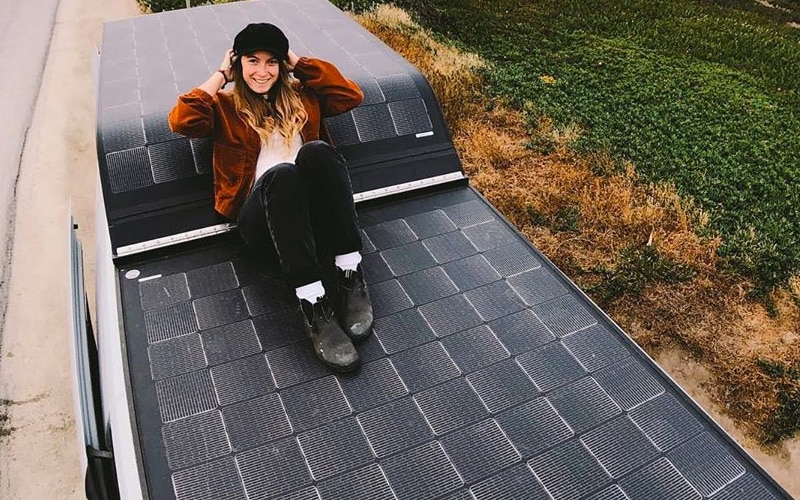
Portable Battery Vendors
A dedicated battery bank for your adventure van or class B motorhome is not required. Many vanlifers are perfectly content to use a solar-chargeable battery bank that can provide power for their electronics. Also, these banks can provide an emergency portable power source for electrical outages in their home or an excellent option to take to tailgates and other outdoor events.
Power banks are made to be portable. So they may not be suitable for running larger appliances for extended periods. They also usually include the batteries and the inverter in a single package.
Jackery
Jackery makes some of the best portable battery packs in the business. They offer various products that range in size, portability, and features. So whether you’re looking for a small battery to keep in your pocket for emergencies or a large battery to run your TV and other appliances, Jackery has you covered.
Their batteries are also rechargeable via solar power, making them an eco-friendly option. And if you need a little extra power while on the go, their power banks can be a lifesaver. They can charge your devices quickly and easily with a high-capacity battery and multiple USB ports.
Anker
I am a fan of the Anker charging packs for my phone and laptop, but they also make a more extensive set of portable electricity sources. For example, I bought one of the first-generation power banks, which I used to provide off-grid power when I went camping to charge my phone and power a CPAP machine while I slept.
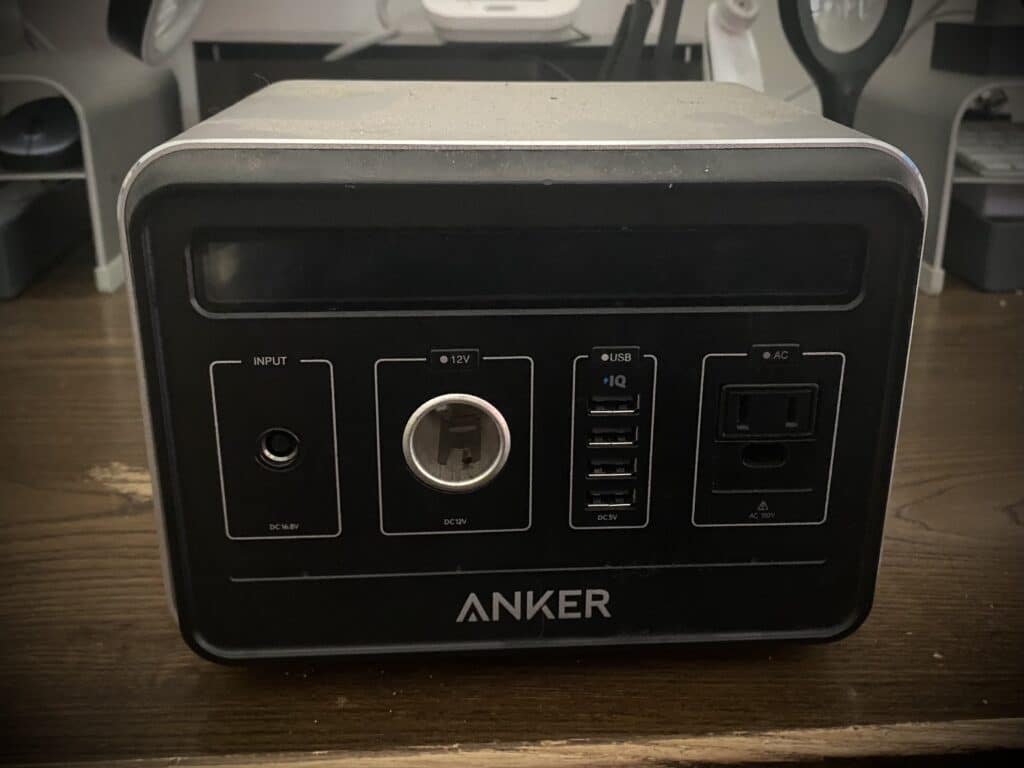
Anker is another popular battery pack brand. They offer various products, including portable chargers, car chargers, and wall chargers. Their products are known for their quality and durability. And like Jackery, their batteries are also rechargeable via solar power.
Their power banks are some of the best on the market. They offer high-capacity batteries and multiple USB ports for quick and easy charging. And their compact design makes them easy to carry with you on the go.
So if you’re looking for a quality battery pack, Anker is a great option.
Goal Zero
Goal Zero is a company that specializes in solar-powered battery packs and charging stations. Their products are some of the most popular on the market and for a good reason.
Before you drop your hard-earned money on one of these systems, you should do your homework to get the system.
Alternatives – Wind and Hydro Turbines
If camping by a moving water source, you can create electricity with a water turbine. You could also use a wind turbine to help with your battery conservation. For either solution, you harness the flow of air or water to turn a small generator. While it’s not the primary way I’d recommend to power your RV, it’s an excellent way to harness renewable resources to keep your devices humming without using fossil fuels as a fuel source. No matter where you are in the world, you should be able to adapt to your location. I see these options mainly as a way to have energy independence during a hiking trip or when battery storage is limited. Also, like solar, their environmental impact is minimal compared to other power sources.
Strategies for Energy Efficiency in your RV
There are a few ways to conserve power when camping in an RV. The easiest is not to use power. However, that’s not always possible. You may have to work while on the road and need power for your laptop, phone, and internet communications.
One easy tip is to use a power strip. This will allow you to plug in multiple devices and turn them off with one switch. You can use battery-operated lanterns with solar charging instead of electric lights. Also, you can charge directly from portable solar panels or a solar generator set-up, leaving your house batteries for things like air conditioners and microwaves.
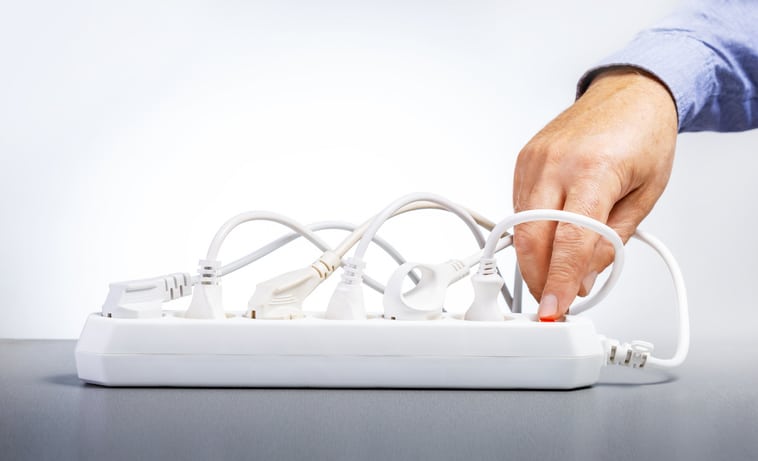
Following these simple tips can save power while camping in your RV.
Summary
If you’re looking for a reliable and eco-friendly source of off-grid power for your RV, Lithium rechargeable batteries, solar panels, and an alternator is likely the most workable combination for your off-grid power system. Lithium batteries are a great choice because they are durable and can last for long periods. Solar panels are renewable and provide independence. Finally, an additional high output alternator is a great way to recharge your batteries. Though there is no one size fits all solution, you should research and consult as many sources of information as possible to make the best decision for your Class B RV or adventure van.

